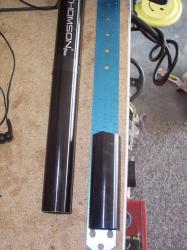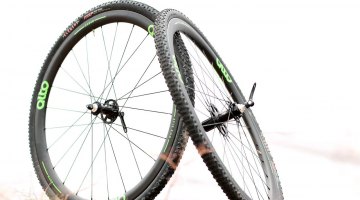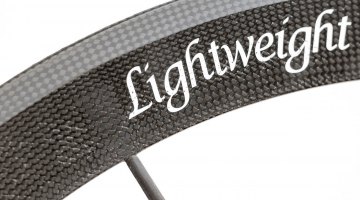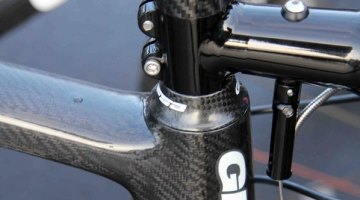Jeremy Burlingame is obsessed with lightweight ‘cross bikes. He continues the “Cutting the Fat” bike-diet series that we featured in Issue 1 and 2 with an online installment below. Follow his path to light bike nirvana but do so at your own risk.
In the first two of the weight saving corner that I so humbly occupy here at Cyclocross Magazine (see Issues 1 and 2), I talked about how to lose some major weight from your bike. If you didn’t read those articles contact Cyclocross Magazine and beg them to sell you a copy of each.
For this third installment, an online edition, I thought I’d highlight some of the common ways in which creative and obsessed cyclocrossers have saved weight from their rigs. They included cutting something that is unnecessarily long and making it shorter or removing things from your bike you don’t really need.
Many people have seatposts that measure 350mm whereas 200mm or more of that is under the seatpost clamp, inside the frame. A general rule of thumb is to have 4 inches into the frame. This is easy. Measure twice, and then cut with a hacksaw. The cut doesn’t have to be perfectly straight as no one will ever see it. Sand the cut edge down some and you’re done. Of course, it goes without saying, you’re likely voiding your warranty, and you should use the post’s minimum insertion line as a guide as to how much you should leave in the frame. I also wouldn’t recommend doing this with carbon posts.
Shorter chain
This is one of those gems that also has performance enhancing results as well as creating a lighter bike. Ensure that your chain is as short as it can be. Refer to the Park Tools website (which has the best wrenching tutorials on the net, good enough you never have to buy a bike mechanic book) for more details on the ideal length for a bike chain. Don’t assume that your new bike came with the perfect length straight from the factory. Factory bikes are a lot of things but no one has ever called them superlight. The additional performance enhancing benefit I alluded to was that it will make dropping a chain almost non-existent (assuming your rear derailleur isn’t garbage).
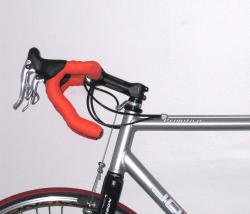 Cutting the fork steerer and flipping the stem up
Cutting the fork steerer and flipping the stem up
This one takes a few more skills than the above two tips. Essentially, by having a stem that is horizontal you need a longer steering tube. Steering tubes are heavy. So by flipping the stem to get your ideal height, you can remove some spacers (which weigh something) as well as a half inch or so from the steering tube (which also weighs something). Note this only works for bikes with threadless stems that are flippable and have a +/- rise/drop to them. On forks with steel steerers, you’d be surprised how much a bit of steering tube weighs.
Removing things
Factory bikes come with stuff you don’t need for racing. The most obvious things are reflectors. Other items include top mounted “cyclocross” levers. If you never use them, remove them. Those plastic spoke guards that are on the drive-side of the rear wheel—-remove it before you show any of your friends. This single item carries more judgment with it about your ability as a cyclist than you’d ever think anything could (plus it weighs something). Everything weighs “something” and all these little somethings add up to moderate somethings in the range of 220-450 grams or 1/2 to a full pound.
What not to do in order to lighten your bike? That’s the topic of another article.
Jeremy Burlingame is the founder of PlusOneLap, a cyclocross blog that features lightweight and custom ‘cross bikes. Although the site isn’t updated as often as it used to be, check out the archives for valuable insights into the world of lightweight and custom cyclocross bikes as well as other weight loss tips.













